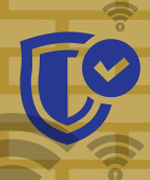Security in Practice: Five Steps for Protecting Your Wireless Network
By Lou Ortiz, president and tech at large, Bratt Systems, Inc.
 The wireless (Wi-Fi) network is a modern convenience that has become an expectation for public buildings and businesses. All of the endodontic practices I work with use Wi-Fi networks to enable their laptops and other wireless devices to access the internet. They also offer Wi-Fi access to patients in the waiting room via guest networking. With that convenience comes liability as your wireless network could make you a target for criminals trying to steal information. All networks have vulnerabilities, but there are things you can do to maximize the security of your network.
The wireless (Wi-Fi) network is a modern convenience that has become an expectation for public buildings and businesses. All of the endodontic practices I work with use Wi-Fi networks to enable their laptops and other wireless devices to access the internet. They also offer Wi-Fi access to patients in the waiting room via guest networking. With that convenience comes liability as your wireless network could make you a target for criminals trying to steal information. All networks have vulnerabilities, but there are things you can do to maximize the security of your network.
First, the basics: Wi-Fi networks include a wireless “router” that is connected to a broadband internet service via a modem. This modem may be attached to the wireless router, or the router and modem may be integrated into one device. When a wireless network is unprotected, there is a chance that an unauthorized user could access your private information. Losing control of your patient and practice data would be a HIPAA nightmare, not to mention extremely damaging to your reputation and your relationships with your referring doctors. In addition, the unauthorized user could view the content of transmissions, download unlawful content using your network, infect computers with viruses or spyware – the list goes on! There are plenty of “bad guys” out there. Protect your practice.
Five Steps for Security
These five steps are regarded as industry-wide best practices for securing a wireless network. Check with your information technology provider to make sure you are taking action to protect your data.
1.Get Encrypted!
Speak in code. Encrypting your data can go a long way toward securing your network. Out-of-the-box routers are “open” – meaning no encryption is configured – so be sure to check that encryption is turned on and configured shortly after your IT provider installs the router and before you configure your private network.
Practice management servers with live patient databases should not be added to the network until encryption is configured. Note that there are different types of encryption, and “WPA2” currently is the most effective standard. You will need to pick a wireless network password to activate the encryption. To maximize security, choose a longer password that utilizes a combination of letters, numbers and symbols (for example, $t@ff123).
2.Turn the Firewall On.
A “firewall” is designed to protect computers from harmful intrusions and can be hardware-based or software-based. Wireless routers generally contain built-in firewalls, but they often are turned off. Configure the firewall to better protect the “gateway” to your practice. Note that some software firewalls at workstations can hinder the operation of your practice management software. Check with your provider, who can make adjustments to the firewall settings if necessary.
3.Change Default Passwords.
This is Security 101. Wireless routers come with preset passwords for administering the devices’ settings that are different from the passwords used to access the wireless network itself. Unauthorized users may know these default passwords and will start here when attempting to access your network. Change the router device’s password as soon as it is installed and up and running. Again, longer passwords made up of a combination of letters, numbers and symbols are more secure. Don’t make it easy for the intruder!
4.Change the Default Name of the Network.
A network’s name is known as its service set identifier, or SSID. When a computer with a wireless connection searches for and displays the wireless networks nearby, it lists each network that publicly broadcasts its SSID. Manufacturers usually give all of their wireless routers a default SSID. Make sure to change your SSID, but avoid using your full practice name. For example, if your practice is called Gutta Percha Endodontics, an SSID of “GPE” would be recommended over “guttaperchaendo.”
5.Create a Password-Protected Guest Network.
The guest network is a necessary but useful evil. Now that we have gone over protecting the private information, we need to make sure to offer Wi-Fi to patients in a safe way that does not endanger the private network. By setting up a password-protected guest network, you can limit the number of users on the network at any given time. But why stop at patients? Direct your staff to use the guest network as well for their personal devices. With the staff using the guest network to surf the web, you protect yourself from the malware associated with shopping and inappropriate websites.
These are just a few best practices to help make your wireless network more secure. At the end of the day, all networks – even protected networks – have vulnerabilities, but taking these steps will make it much more difficult for an intruder to seize your important data.
Lou Ortiz is the president and tech at large at Bratt Systems, Inc., providing computer hardware and IT services to the endodontic community in the United States and abroad. He can be reached atlou@brattsystems.net.




